Back in 2015 a 16-year-old teenager by the name of Zinho Vanheusden, who was predicted a bright future, made the move from Standard Liege to Serie A giants Internazionale. After four years and a loan spell at Standard, Vanheusden decided to rejoin Walloon club on a permanent base. The transfer back to Standard wasn’t because of a lack of quality since Inter included a buy-back clause in his contract.
Now at 21 years of age Vanheusden has shown his potential at first-team level. But due to two long term knee injuries, his career has been a bit held back. As he is a regular at the youth team levels of the Belgium national team, Vanheusden is still Belgium’s hope to fill in the shoes of former Manchester City captain Vincent Kompany who left the national team.
This tactical analysis in the form of a scout report will delve into the strengths and weaknesses Vanheusden possesses as a central defender. In this analysis, we will also take a look at Standard’s tactics and why these suit his playing style. Note, however, that Vanheusden has only played the game against Beerschot due to suspension.
Vanheusden in possession
Standard aren’t known for being a team that likes to have the ball. Over the years, they have shown to be a team that likes to wait for a mistake from the opposition and to then pounce and exploit the huge space in behind the opposition’s defensive line to score. In 2019/20 under Michel Preud’homme, Standard tried to play more attractive football starting from the back, although this wasn’t always the case. Vanheusden’s ball-playing qualities certainly helped in playing out from the back. On average he plays 39,63 passes per game, of which 87,5% are accurate.
Most of these 39,63 passes per 90 minutes are lateral passes as he completes 19,57 of those per 90 minutes. 14,43 of the 39,63 in total are forward passes which means he only plays 1,89 backward passes per 90 on average. These numbers indicate that Standard vary between a patient build-up approach and a direct one. Because of Vanheusden’s ability to play vertically, Standard have the unpredictability factor in their game.
The reason why his passing stats aren’t higher is due to Standard’s lower possession-based approach to the game but also due to his positioning. The image below shows how Vanheusden takes up a deeper position to receive the ball. This gives him the opportunity to receive without pressure. But the disadvantage is that the distances and connections between his teammates become longer. Consequently, playing short forward passes is more difficult and Vanheusden has to play a predictable diagonal to the full-back or a long ball to the strikers.
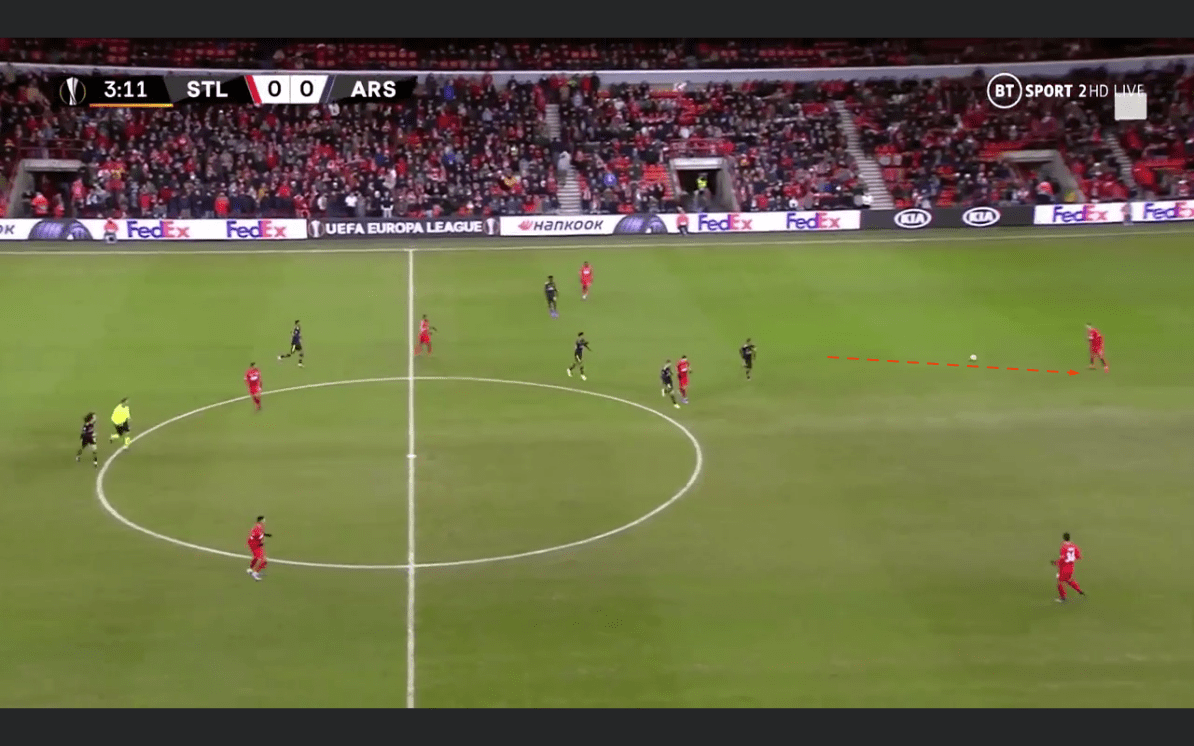
Time on the ball
As discussed above, Vanheusden’s passes are partly forward ones. Most of these forward passes are long passes. Preud’homme asked the Belgian centre-back last season to play long when the occasion occurred. Consequently, Vannheusden was a huge asset to Standard’s build-up play last season. Back then, the Belgian had an accuracy of around 60% when playing long passes. This shows he is reliable in this area of the game.
In the example below, Vanheusden sees the space behind Didier Lamkel Zé. This space is created by Vanheusden himself by driving with the ball forward and giving Lamkel Zé a decisional headache. Thus a 2v1 situation on the outside is created.
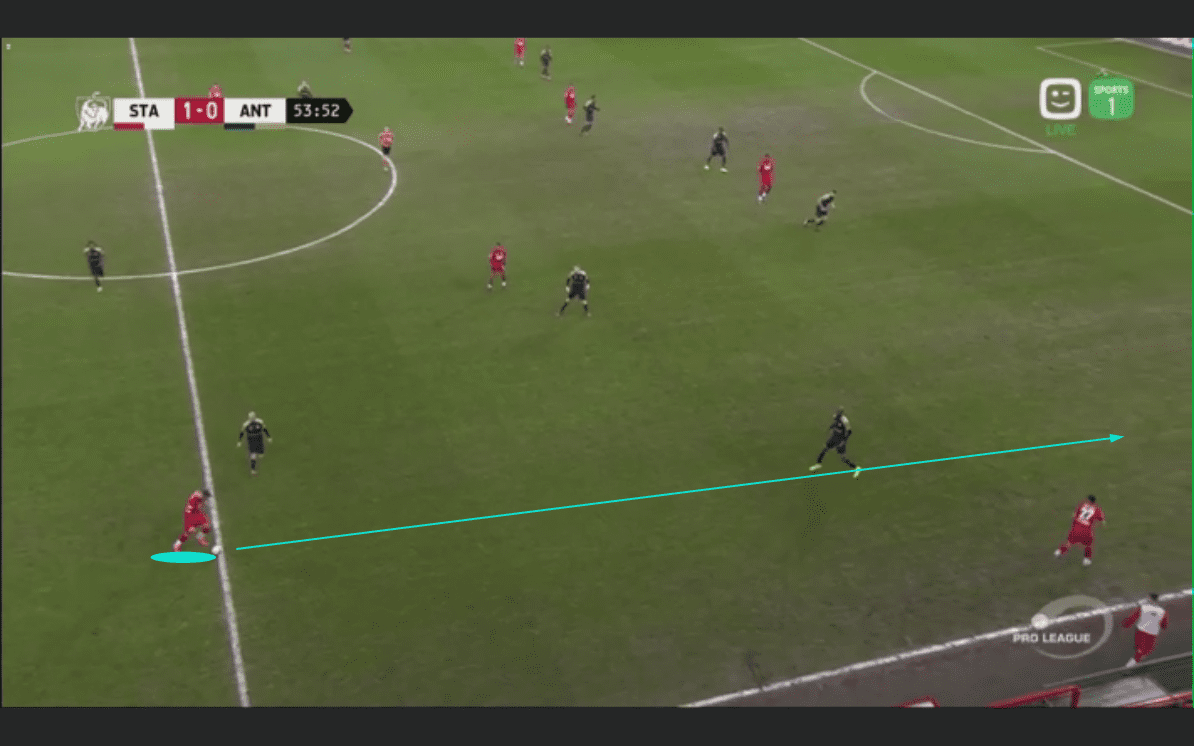
Another example below where Standard take on Premier League side Arsenal. In the early stages of this Europa League game, Standard’s full-backs ensured they were deep and wide when Vanheusden or Konstantinos Laifis were in possession of the ball. Here we see Vanheusden with two clear passing options as the midfielders are man-marked. He can either play to the wide full-back or produce a long ball to Renaud Emond. Vanheusden chooses the latter, which provides Standard with an opportunity to attack the goal once they won the second ball.
Vanheusden has pressure from the Arsenal attacker Alexandre Lacazette. He has minimal time to control and pick out his next passing option. Although there were ‘safer’ options for him to retain possession, this example highlights his confidence in passing the ball, as well as showcasing why he is a key player to lead Standard’s forwards.
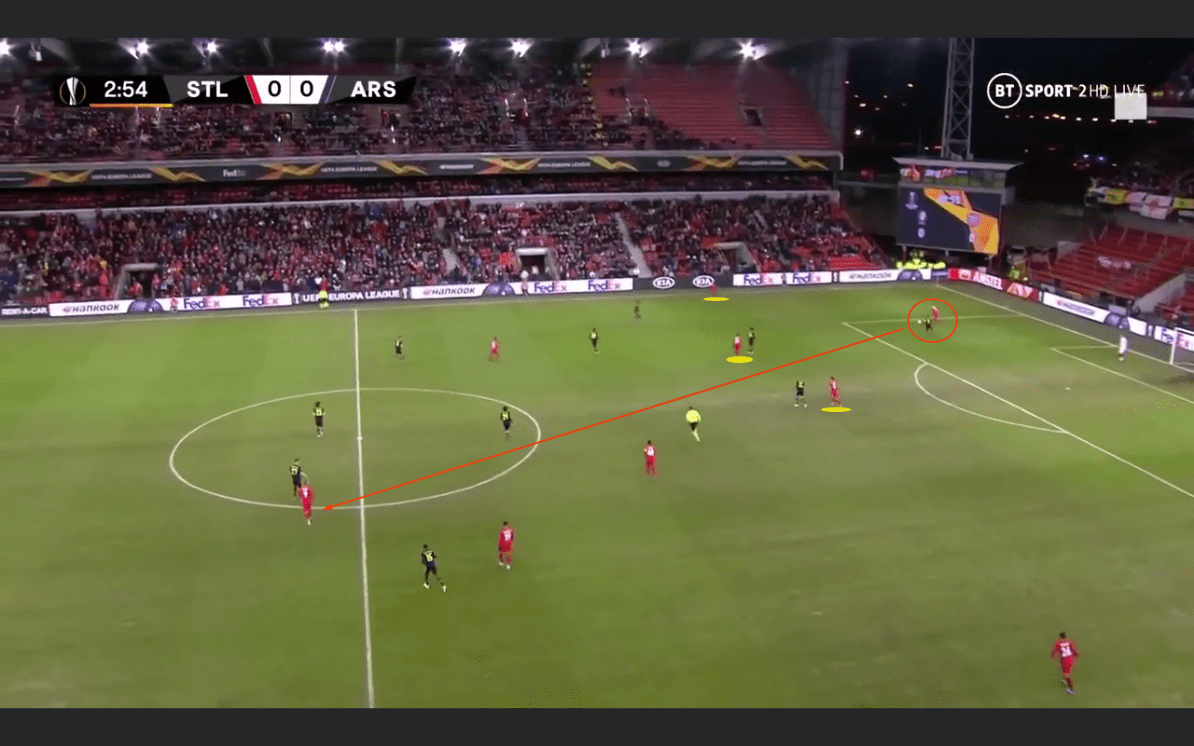
But when the opposition chooses not to press high and stay in a medium block, Vanheusden has more time on the ball. One would say this plays more into the hands of Vanheusden but with more time he doesn’t always make the right decision.
Below he comes in a lot of space but chooses to play a long ball instead of driving into this space and attracting any second line of pressure. Consequently, Standard lose the ball and get countered on.

A final example when Vanheusden has time on the ball can be seen below. This time he gets time on the ball and penetrates with it at his feet into space. What follows is a loss of possession because he runs into the defenders.
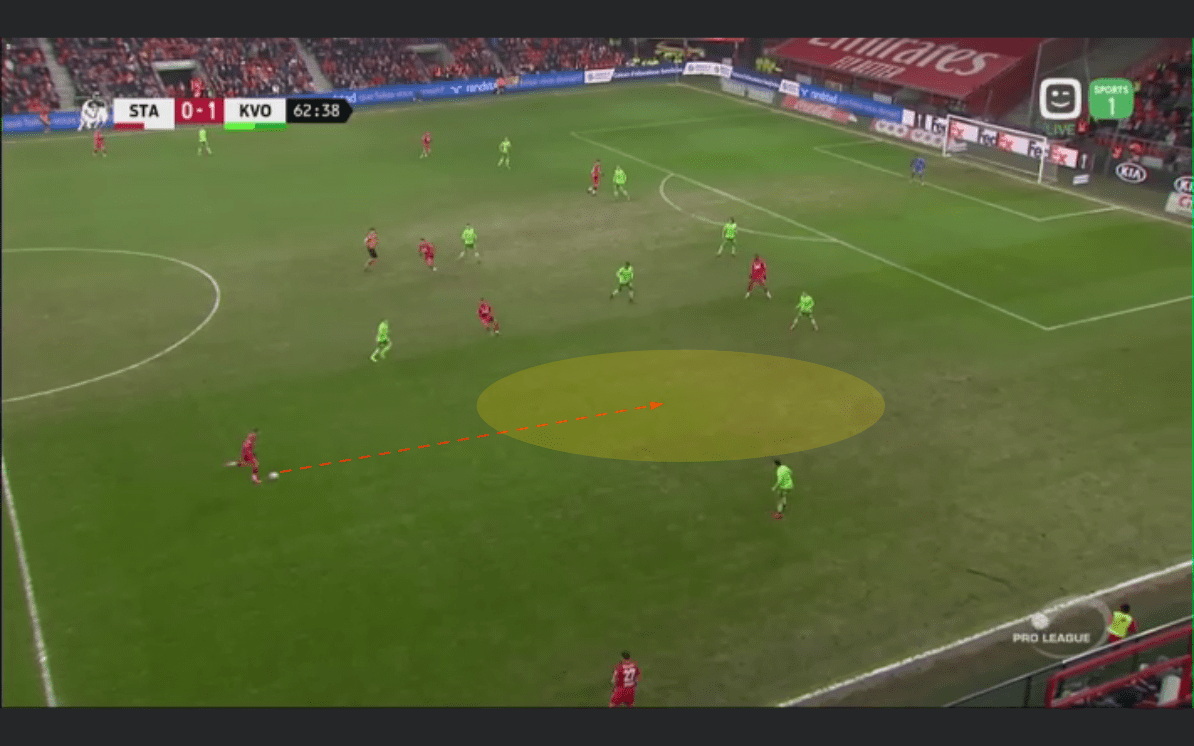
Out of possession
Zinho Vanheusden also plays a crucial role in executing Standard’s out-of-possession tactics. There were many occasions in the season 2019/20 where we saw him as the first defender to press the opposition when they broke into the defensive third. We also saw Vanheusden stay tight to the striker when the ball was being progressed forward by the opposition.
When the opposition is in possession and receiving between the defensive and midfield line, Vanheusden would step out of the back four and press the ball carrier. Standard would ask the other defenders to push inside and reduce spaces between every defensive player whilst also covering Vanheusden when he was stepping out to engage in the duel. We can see something similar in the image below.
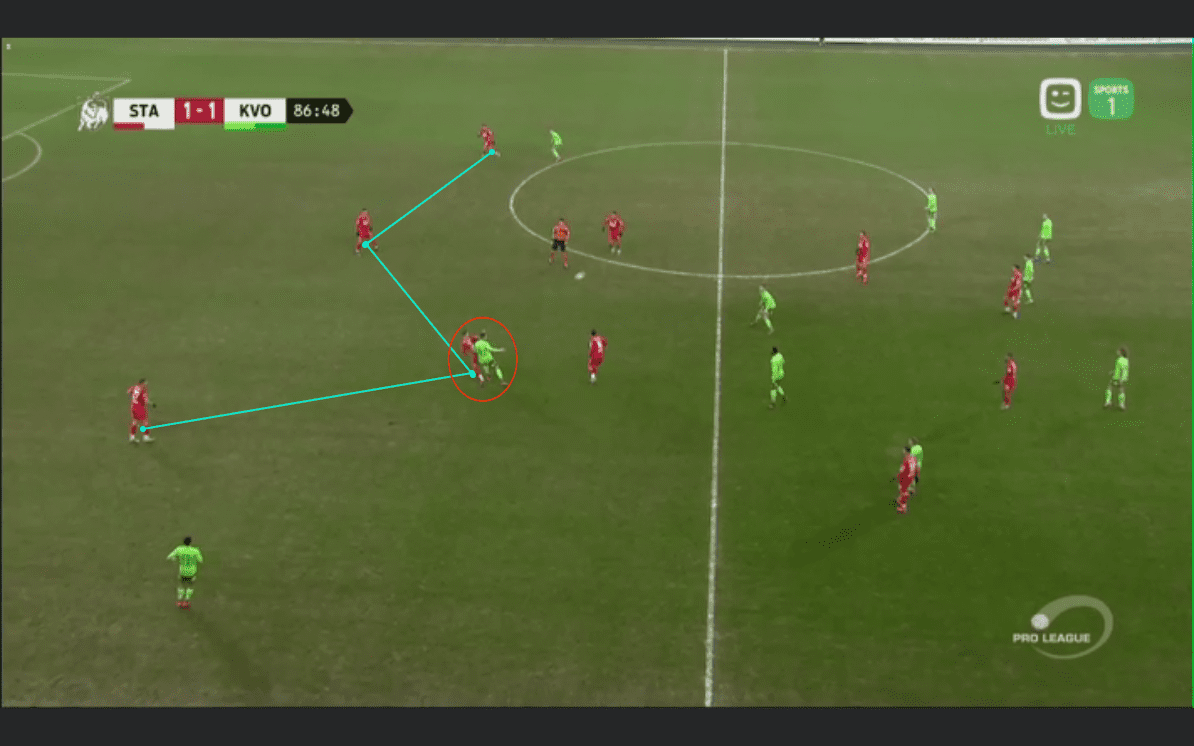
As well as pressing the player who has his back to goal, Vanheusden would also press the player facing the goal and dribbling into dangerous areas. Again, he would leave the back four, which then would become a narrow back three to force the opposition out wide.
In the game below, a situation occurs where the Oostende forward can pull back the ball in front of Standard’s last line. Due to the Belgian’s body position, Vanheusden is able to perceive the ball carrier and the players in front of him at the same time. This gives him the option to intercept the ball instead of engaging into a defensive duel.
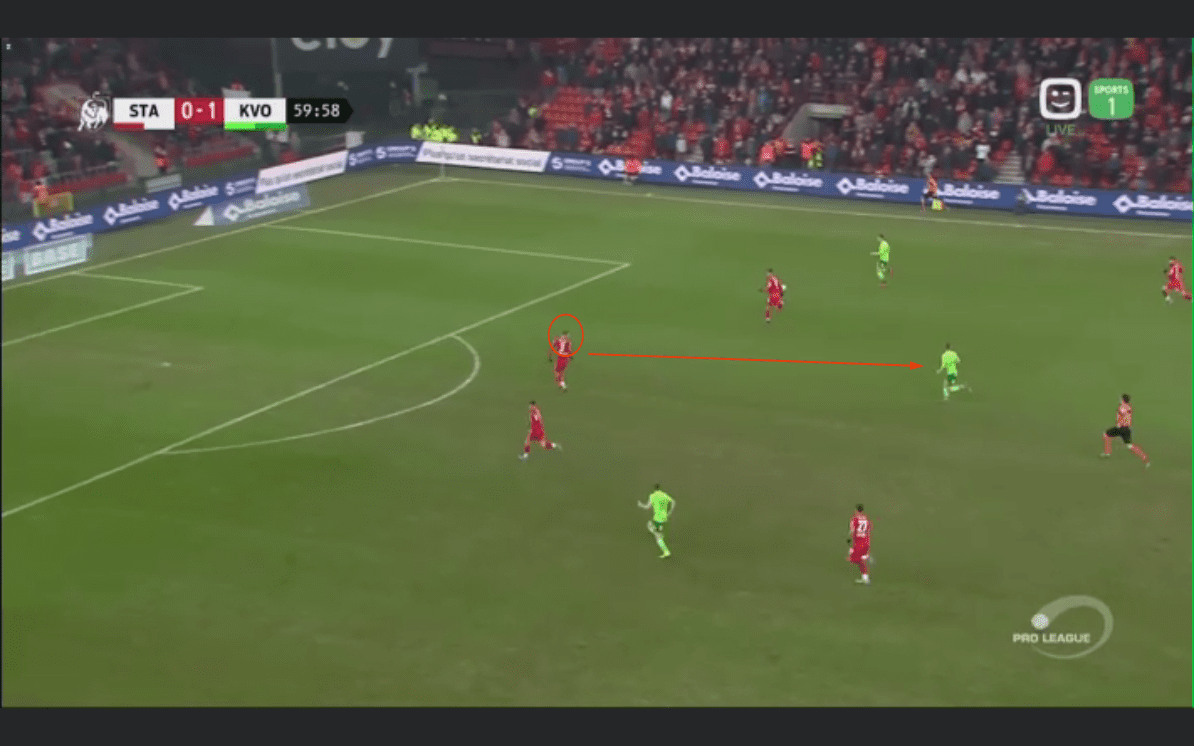
On average last season, he tried to intercept the ball 5,73 times per 90 minutes. This amount is down to his understanding of the game. He is very good at reading the game and will leave the option in between the lines free, thus creating a fake feeling of control for the ball-carrier.
The moment the player is about to receive the ball, Vanheusden steps in to intercept it. A big strength of his can be seen after that because once he intercepts, Vanheusden can set up a counter through carrying the ball with pace.
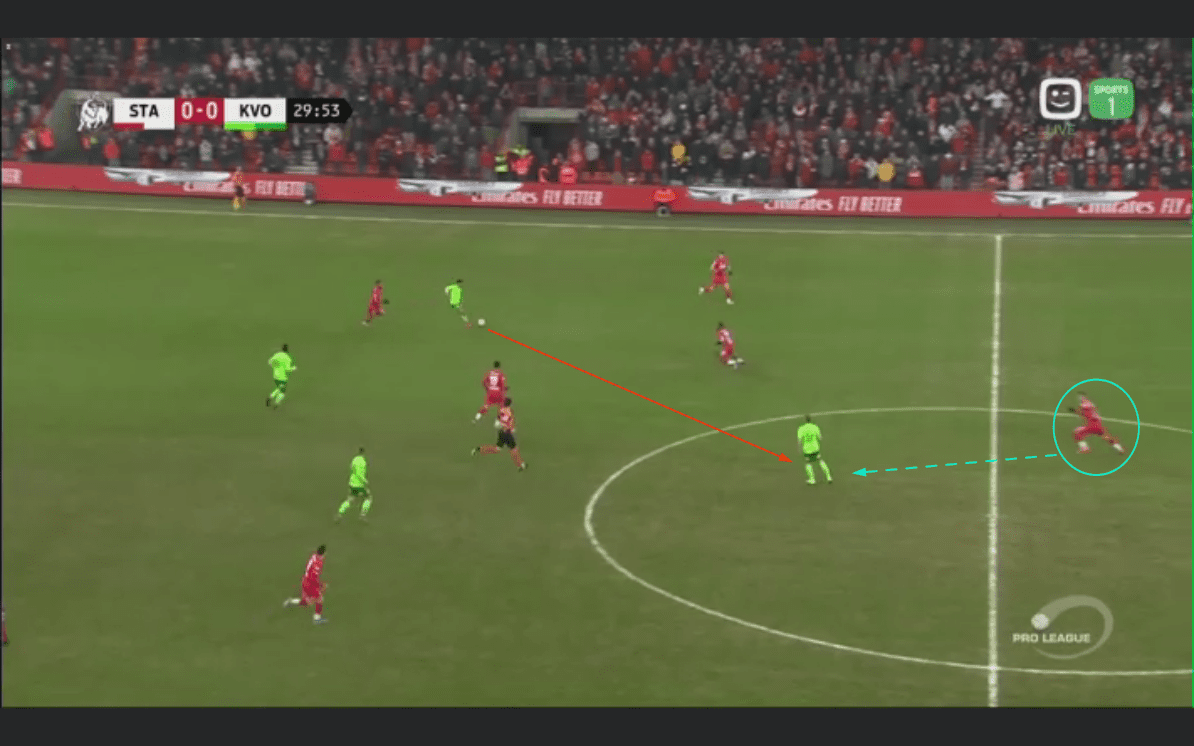
Thus intercepting the ball is a huge part of his game. The young centre-back isn’t scared of a physical battle as well. On average he attempted 6,56 areal duel per 90 minutes last season with a success rate of 45,19%.
This looks like a rather low percentage but when we compare to his colleagues we see that most of them also have a percentage of around 50%. This often brings relief of the defensive line when under pressure and gives his team the chance to start an attack again.
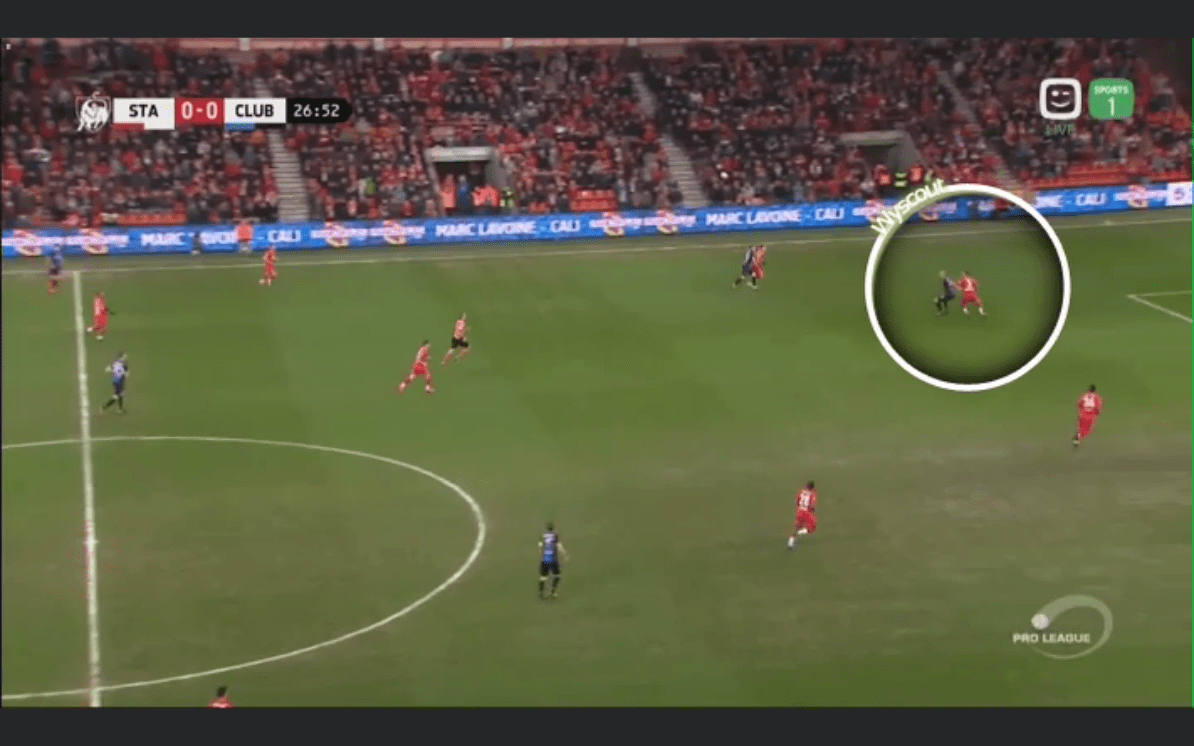
Conclusion
In his second stint at Standard Liege, Vanheusden has matured enormously in a short time. Even though he has some weaknesses in his game, his strong points make him a very reliable centre-back. The current Standard manager Philippe Montanier even named the young centre-back captain of the team at only 21 years of age. This is only a complement to his progress. Although Vanheusden has been held back due to injuries, he still has a bright future ahead of him.





Comments